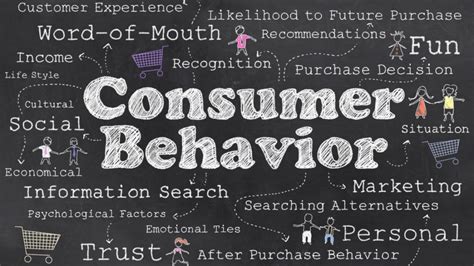Decoding Consumer Behavior in the AI Era: Insights from Data You’re Ignoring

By Brutnow Team | Brutnow Media Company | Insights & Intelligence
In today’s hyper-connected world, businesses collect data from nearly every click, swipe, and scroll. Yet, even as artificial intelligence (AI) reshapes how organizations interpret this information, many brands are missing out on one of their most valuable assets: **the hidden behavioral data that reveals what consumers truly want.
The New Consumer Landscape in the AI Age
Consumer behavior in the AI era is no longer linear. Traditional metrics like website traffic or conversion rates only show the surface. AI has enabled brands to go deeper — analyzing micro-interactions, emotional sentiment, and contextual behavior across devices and platforms.
However, many organizations still rely on static dashboards and outdated analytics models. This creates a **blind spot** in understanding the *why* behind consumer actions. AI-powered predictive models and behavioral analysis tools can now uncover intent — not just past behavior.
For example, **AI-driven clustering** can group users by emotion, tone, or decision friction rather than demographics. A 25-year-old in Dubai and a 40-year-old in Mumbai may react similarly to a sustainability message, and AI can recognize that shared sentiment instantly — a pattern that traditional segmentation often misses.
The Data You’re Probably Ignoring
While businesses focus on first-party data like purchase history and demographics, the **ignored data** often holds the deepest insights. These include:
- Dwell Time & Scroll Depth – How long a user hesitates on a product page or skips a section reveals subconscious preferences. AI can map these pauses to emotional triggers.
- Voice & Chat Interactions – Conversations with chatbots or customer service contain language cues that reflect trust, hesitation, or curiosity — essential for refining sales funnels.
- Multimodal Behavior – A user who views a product on mobile but completes the purchase on desktop signals device-based intent that AI can connect to timing and convenience patterns.
- Social Listening Data – Sentiment around brand mentions, hashtags, or even emojis can reveal mood trends faster than survey feedback.
- Zero-Click Actions– Users who interact with embedded widgets, previews, or snippets without visiting the full page represent a new type of digital micro-engagement.
These hidden signals, when layered with machine learning, form **predictive consumer personas** — far more dynamic
From Reactive to Predictive Marketing
AI allows businesses to shift from reactive analytics (“What happened?”) to predictive intelligence (“What will happen next?”). Tools like generative AI, natural language processing (NLP), and emotion recognition systems can predict churn, identify purchase intent, and even detect consumer frustration before it surfaces.
For instance, a retail brand using sentiment AI can identify when customers are showing early signs of disengagement and deploy personalized re-engagement campaigns. Similarly, predictive models can forecast demand surges in specific regions based on online chatter — enabling faster inventory and logistics decisions.
Ethical Data Use and Consumer Trust
Yet, with great power comes great responsibility. AI’s ability to decode behavior at a granular level raises privacy and transparency questions. Modern consumers expect personalization — but not at the cost of intrusion.
Brands that openly communicate how AI enhances user experience, rather than manipulates it, tend to build long-term trust and loyalty. Transparent data governance and ethical AI use will soon be as important as accuracy and innovation.
Turning Ignored Data into Competitive Advantage
To leverage these hidden insights effectively, businesses should:
Audit existing data sources for behavioral and emotional signals. Integrate AI analytics that merge qualitative and quantitative data. Train teams to interpret AI-driven insights in human terms, not just statistics. Continuously experiment with feedback loops to refine consumer profiles.
The brands that succeed in the AI era will be those that can see beyond visible data points — recognizing emotion, intent, and behavior as the new currency of business intelligence.
Final Thought
In the end, decoding consumer behavior in the AI era isn’t about collecting more data; it’s about understanding the right data. The insights you’ve been ignoring — emotional context, hesitation, micro-actions — might just be the missing link between customer awareness and lasting brand loyalty.
For more insights into AI, consumer analytics, and global business innovation, visit Brutnow.com.





